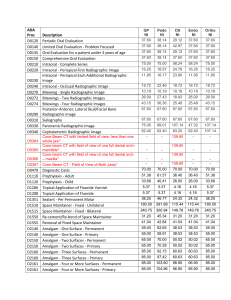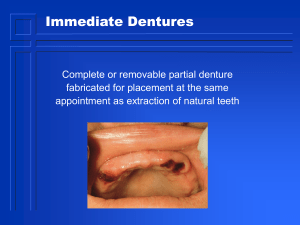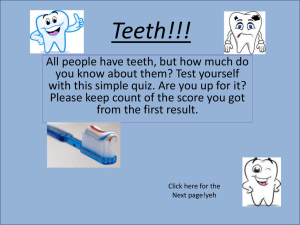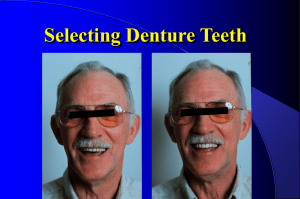Case Presentation
advertisement
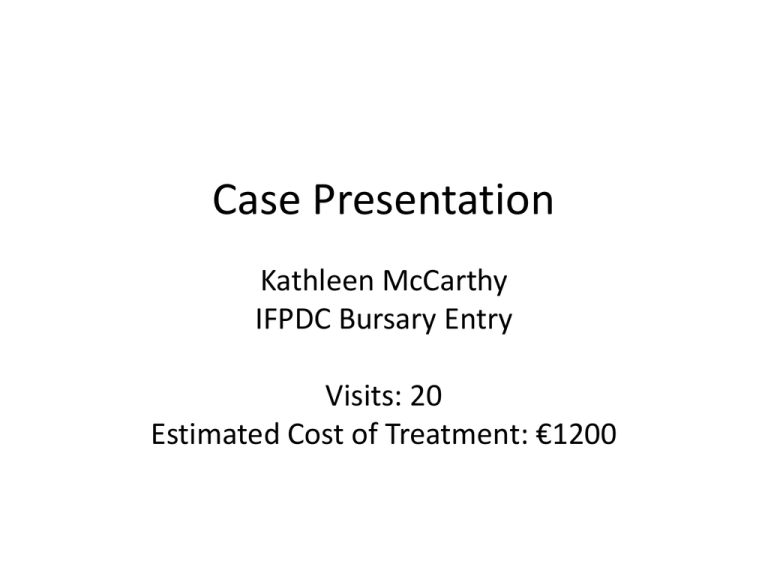
Case Presentation Kathleen McCarthy IFPDC Bursary Entry Visits: 20 Estimated Cost of Treatment: €1200 History • Reason for Attendance: The patient was concerned about the appearance of her maxillary incisors as she thought they were “very worn down”. She also requested a new upper partial denture because an upper anterior natural tooth had fractured. History • Social history: – The patient lives approximately one hour from CDH. – She is 53 years old. • Medical history: – The patient quit smoking in March 2010. – The patient is currently fit and well • Dental history – – – – Brushes twice a day, with irregular use of dental floss and mouthwash. Last dental visit was about 2 years ago. The patient is aware that she grinds her teeth at night. She used smoker’s toothpaste for over 30 years History • Denture history: The patient wears an upper acrylic partial denture, replacing 15, 23, 24. The denture is 25 years old, and is worn at night. She cleans the denture twice a day with toothpaste. The patient was provided with a lower RPD (acrylic) but never used it. Exam • Extra-oral: NAD • Intra-oral: NAD except hard palate appeared red and slightly swollen (on questioning the patient said it was not painful). The redness was underneath the fitting surface of the acrylic partial denture. • CPITN: 1 1 1 0 0 0 • Plaque score: 25%. (The patient maintained good oral hygiene and low plaque scores throughout treatment.) Exam Teeth present: 16, 14, 13, 12, 11, 21, 22, 25, 26, 38, 34, 33, 32, 31, 41, 42, 43, 44, 45 • The crown of the 13 tooth was fractured, with little coronal tooth structure remaining. This tooth had previously been root filled and there was caries undermining the remaining coronal tooth structure. • On examination, the patient’s four maxillary incisors appeared worn with jagged edges of enamel. • There is a non-carious cervical lesion (NCCL) on the 34. Maxillary incisors appeared worn with jagged edges of enamel Non-carious cervical lesion (NCCL) on the 34. Aids to diagnosis • Upper and lower study casts mounted on a semiadjustable articulator. • OPG radiograph. – OPG showed that 23 is unerupted. (The upper left c was extracted at about 30 years of age.) • Previously taken PA of 13 to evaluate RCT. • After mounting the study casts, it became obvious that the patients occluding vertical dimension (OVD) would have to be increased before restoring the anterior teeth. OPG PA Diagnosis • Denture stomatitis on hard palate • Severe toothwear on upper anterior teeth 12, 11, 21, 22 due to attrition and abrasion • 34 has a NCCL due to abrasion • 13 has no clinical crown but has been root treated. There is caries on the retained root. • 23 is unerrupted • Missing teeth: 16, 15, 23, 24, 27, 35, 36, 37, 46, 47. • The vertical dimension is decreased, with insufficient space available to restore the anterior dentition Aids to treatment planning • Using a wax occlusal rim, I determined that an increase of 2.5mm would be acceptable aesthetically. • I completed a diagnostic wax-up of the proposed anterior restorations and applied sticky wax to hold denture teeth in place. • The completed wax-up at the increased vertical dimension highlighted an extra issue: some of the existing natural teeth would be out of occlusion. Treatment Plan 1. 2. 3. 4. 5. 6. 7. Oral and denture hygiene instruction Caries removal and placement of a composite dome on retained root of 13 Replacement of an amalgam restoration with composite resin in the 14mo tooth to bring it into occlusion at the increased vertical dimension Addition of amalgam to existing amalgam restorations on 26 and 38 to bring these teeth into occlusion at the increased vertical dimension Add cold-cure acrylic resin to the patient’s existing partial denture to increase her OVD If the patient tolerates the increase in OVD, restore the upper anterior teeth 12, 11, 21, 22 with composite resin. These teeth are significantly worn and may require crowns as definitive restorations Provide upper and lower cobalt chrome partial dentures Treatment carried out: • Caries removal 13o. Composite dome (shade A3) over the retained root. • Added self-cure acrylic resin to the patient’s existing partial denture to increase her OVD. • Replaced amalgam in 14mo with composite resin shade A3, and restored into occlusion at the increased vertical dimension. • Cut an occlusal lock into 38o, and added amalgam to occlude at increased vertical dimension. Composite dome 13 Addition of cold cure acrylic to RPD to increase the vertical dimension. 14mo Amalgam in 14mo replaced with composite resin 38o Occlusal lock into 38o, and added amalgam to occlude at increased O.V.D. Composite dome 13 Treatment carried out: Restored 4 maxillary incisors (composite resin shade A3). Adjusted existing RPD. P/P P/P Review after 3 months • Caries on composite dome 13 (caries removal and restoration completed). • Patient happy with P/P but wanted to discuss improving the appearance of her lateral incisors. Treatment planning • The central incisors were aesthetically and functionally sound. • The lateral incisors were weaker as they both had more composite than tooth structure coronally. The aesthetics were also poor, especially the 22 because the tooth is rotated. • Decided that these teeth should be crowned. • All-ceramic crowns would be aesthetic and would have an additional benefit of bonded retention by using resin cement. • However, the significant preparation required risks devitalising the tooth • N.B. for 12 because pre-op periapical radiograph showed that the root canal narrow and difficult to root treat. • Patient agreed to treatment. Treatment carried out • Prepared 12 and 22 for all-ceramic crowns using retraction cord to place labial margin 0.5mm subgingivally. • Shade: A3 (body) and A2 (incisal edge). • Definitive impression using light and heavy bodied silicone material. • Temporary crowns using Integrity material and TempBond cement. Crown prep 12 Shade matching Temporary crowns Try-in and delivery • No problems with try-in once temporary cement removed! • Cemented crowns with Nexus resin based cement. Reflection • I learned a lot from this case, especially about how to treat broken down teeth where there has been a loss of vertical space. • I did a lot of extra reading especially in the treatment planning stages, and I benefited by learning about other possible treatment options. • I went through a lot of ‘firsts’ with this patient including toothwear, cobalt chrome partial dentures and crown preparations. • I believe the improvement in both strength and aesthetics achieved by crowning the 12 and 21 was worthwhile. • However, I believe that the central incisors did not require crowning and I am quite proud of the composite restorations on these teeth! • The result was a very satisfied patient!
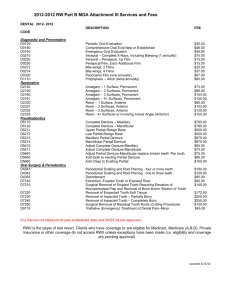

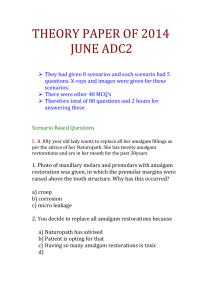
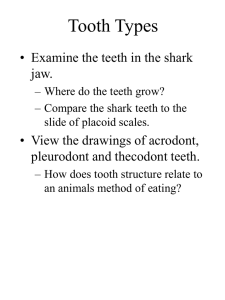

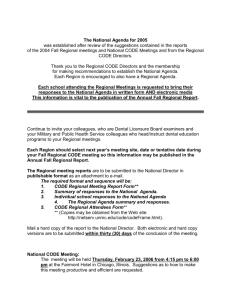

![Denture Base Considerations [PPT]](http://s3.studylib.net/store/data/009715762_1-188cc755da4dd7dcaef7416bac95065c-300x300.png)
